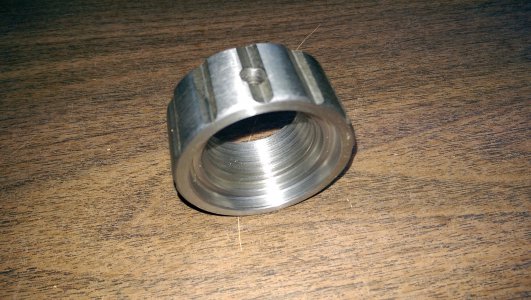- Joined
- Mar 20, 2014
- Messages
- 440
I will soon be buying a new import 8" 4 jaw independant chuck for my 12" logan. I plan to also get a threaded adapter plate for the 2 1/4 by 8 tpi spindle. I realize that, other than the threads being cut, the rest of the machining to fit chuck to adapter will be done by me. I'm pretty comfortable with that, (thanks to the info I gotten here), except for one thing. I was recently told by a supplier that some models of Logans have a very slightly larger OD spindle register, than most of the other 2 1/4 by 8 spindles (Southbend, for example). He said that wasn't hard " just take a few thou. off the ID of the plate register" Here is my problem. How do I mount the adapter plate BACKWARDS so that I can "take a few thou.off the register" PS. All I have now is a 6" 3 jaw. Thanks, JR49


